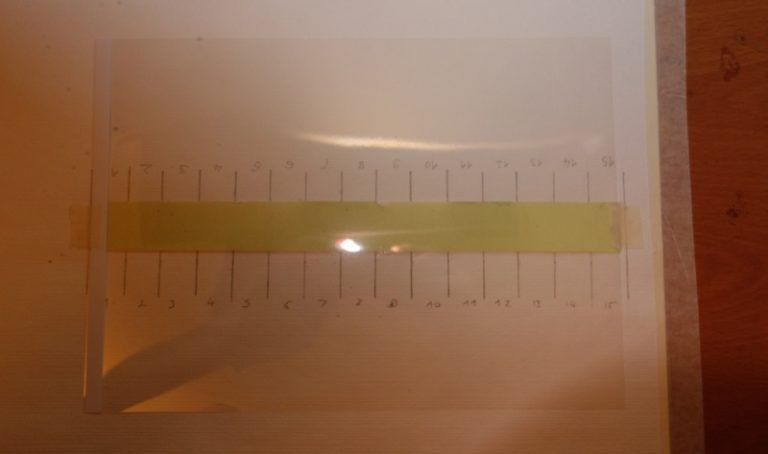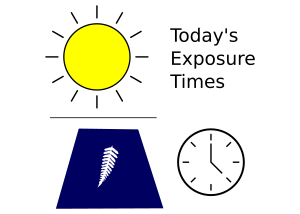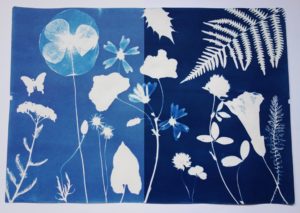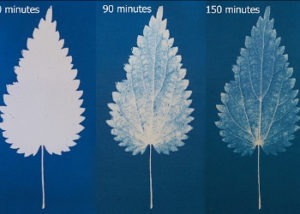Use this tool for estimated times for exposing cyanotypes in the sun
Read MoreHow to do a Step test
When exposing your cyanotype print one of the most important factors is to establish correct exposure time, whether exposing with the sun or a UV lamp. UV Lamps will give you consistent results and you will only have to do this step test once. With the sun exposure time will change between summer and winter, cloudy and clear skies, morning and afternoon.
We will describe the process using our UV lamp as a light source.
What you need:
- Make a test strip by coating a piece of paper with the sensitizer and drying it completely. Even coating is very important for good results.
- Decide on your range of minutes. With our exposure lamp with did a step test between 1 and 15 minutes, with every minute being a step. With the sun you might only need 2 or 3 minutes and maybe 30 second intervals.
- You will have to move a card that blocks the light during exposure, so make sure you tape everything else down on your table. Start with a piece of paper with the minutes marked clearly as guides.
- You want to create the same conditions as when you will expose your negatives. Place a blank transparency on top of your test strip and tape it down too.
- Then finally a piece of glass to ensure contact between you test strip and transparency, secure this too that it doesn’t move.

Now you are set up let's do the step test:

- Insert you light blocking card under the glass and cover all your steps except the last one, this square with have the longest exposure time.
- Start your timer and after each minute pull your card one square further.
- Once your whole test strip is exposed switch off. Wash it in tap water until the whites have cleared and there is no evidence of yellow in the wash water. Let it dry.
- Your cyanotype print will darken as the print dries and oxidizes. Wait until it is dry and you can see the gradiations between the steps clearly. Now it’s time to evaluate.

If you look at the image above you can see that after step 12 (12 minutes exposure) it doesn’t get any darker. This is what you are looking for, there is no point to expose your prints longer than this as you have reached the maximum darkness. This will be your exposure time as long as you use the same light source, paper and coating methods.
If you are exposing with the sun and it is hard to establish a correct exposure time before hand, watch the dark areas of your print or the borders where the transparency is not covering the paper. The yellow will turn dark green to dark blue and finally dark silver-gray colour. This will give you an indication that your print is exposed.
Related Tutorials
How to achieve darker blues
Tutorial on how to achieve a darker blue in your cyanotypes
Read MoreA3 Exposure
How to expose an A3 size print with two of our UV Lamps
Read MoreLeaf detail
Tutorial on how to achieve more detail in your final print
Read More




